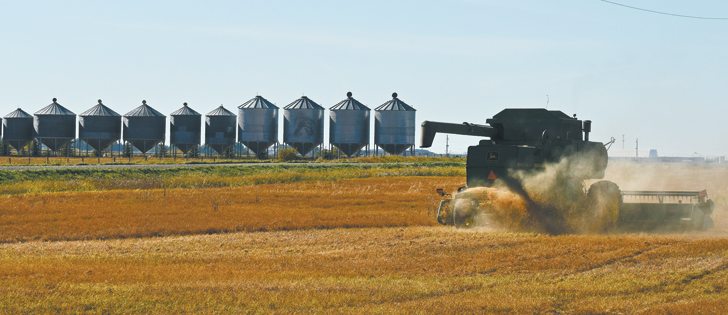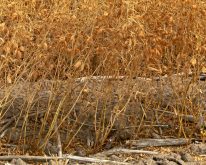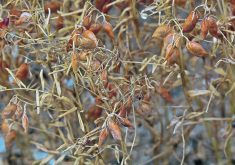There were only a couple of surprises in Statistics Canada’s June seeding intentions report but one was a doozy.
“What jumped out to me the most was the lentils,” said Derek Squair, president of Agri-Trend Marketing.
Statistics Canada estimates a record-shattering 5.8 million acres of lentils, which is 48 percent higher than last year and double the previous five-year average.
That caught the attention of many market analysts, including Chuck Penner of LeftField Commodity Research.
“That many acres and really good (weather) conditions, that’s really setting up for a bit of a scary(price) downturn if it dries out now in July,” he said. Lentils could used drier weather to avoid disease problems.
Read Also

Critical growing season is ahead for soybeans
What the weather turns out to be in the United States is going to have a significant impact on Canadian producers’ prices
Most of the acreage increase is in red lentils, which account for 4.3 million acres or 74 percent of the lentil crop, followed by large green at 20 percent and small green at five percent, with the remainder in the “other” category.
Penner said green lentil demand tends to be static, but exporters are able to encourage red lentil demand by lowering prices.
He believes red lentil prices would have to fall to the low-to-mid 20 cents per pound range to stimulate the additional demand to mop up the anticipated excess supply.
If prices remain above 30 cents per pound, there will be abundant carryout.
Jon Driedger, senior market analyst with FarmLink Marketing Solutions, said the lentil number piqued his interest.
“Assuming the yields are there and if the quality holds up, oh boy, that’s an awful lot of lentils,” he said.
Driedger said more green lentils are going in the ground, but it’s not an overwhelming amount and they are grown in some of the wettest areas of Saskatchewan, so that could reduce yield and quality.
He believes the gap between red and green lentil prices is going to continue to widen.
“Could you see (red lentil) prices potentially trade into the lower 20s and below? I wouldn’t rule it out,” he said.
A lot depends on demand. If India has another short crop then that could be enough to keep prices from sliding.
Squair said the other surprise in the report was flax acres. Statistics Canada forecasts 925,000 acres, down from 1.6 million acres last year.
“The flax seems really low,” he said.
Driedger agreed that it’s a small number for flax. FarmLink was forecasting 1.1 million acres and that was at the low end of trade estimates.
A sizable carryout from the 2015-16 crop should prevent a flax price rally in the short-term, but there is potential for a winter or spring rally if the estimate proves accurate.
Squair said the canola number is bullish. Statistics Canada estimates 19.3 million acres, which is slightly smaller than last year’s crop.
He believes that is not burdensome given that export and domestic demand was more than 18 million tonnes this crop year.
“I thought the canola number was very constructive,” he said.
“We need big acreage and big yield numbers to keep up with the demand.”
Analysts were not surprised by the wheat number of 23.2 million acres, which is down one million acres from last year. That includes 6.1 million acres of durum, which is up from 5.82 million acres last year.
Penner is not concerned about the 4.3 million acre pea crop, which is up from last year’s 3.7 million acres. Pea demand is expected to be strong.
“I’m not worried about the pea market much at all,” he said.
Yellow peas account for 83 percent of the acres, green peas 16 percent and the remainder devoted to other pea types.
Green pea acres are down compared to last year, which will be supportive to green pea prices.
Penner said the barley and oats markets could get a little tight considering both crops have been downsized.
The canaryseed number of 260,000 acres did not surprise Squair. It was down from 325,000 acres last year because prices and demand for the crop have been lackluster.
And he agreed with the mustard estimate of 525,000 acres, up from 345,000 acres last year. Mustard has been delivering good returns to growers.
Squair had no problem with the chickpea estimate of 160,000 acres but thought the bean estimate of 287,000 acres was too low.
All of the analysts said the acreage report will have little impact on prices compared to weather and crop yields from here on.
So far the crop is looking very good with the exception of some pockets where it is too wet.


















